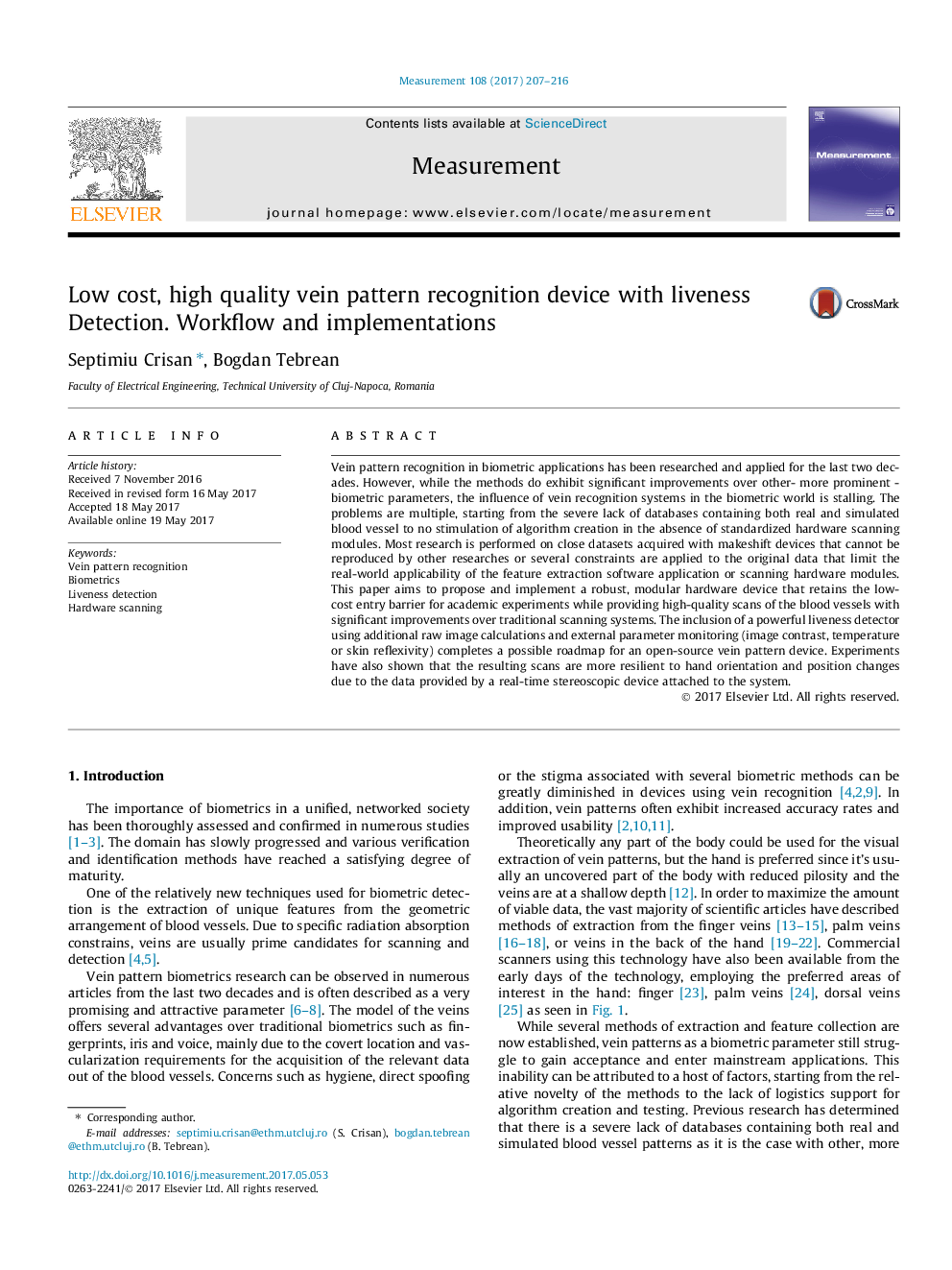| Article ID | Journal | Published Year | Pages | File Type |
|---|---|---|---|---|
| 5006642 | Measurement | 2017 | 10 Pages |
Abstract
Vein pattern recognition in biometric applications has been researched and applied for the last two decades. However, while the methods do exhibit significant improvements over other- more prominent - biometric parameters, the influence of vein recognition systems in the biometric world is stalling. The problems are multiple, starting from the severe lack of databases containing both real and simulated blood vessel to no stimulation of algorithm creation in the absence of standardized hardware scanning modules. Most research is performed on close datasets acquired with makeshift devices that cannot be reproduced by other researches or several constraints are applied to the original data that limit the real-world applicability of the feature extraction software application or scanning hardware modules. This paper aims to propose and implement a robust, modular hardware device that retains the low-cost entry barrier for academic experiments while providing high-quality scans of the blood vessels with significant improvements over traditional scanning systems. The inclusion of a powerful liveness detector using additional raw image calculations and external parameter monitoring (image contrast, temperature or skin reflexivity) completes a possible roadmap for an open-source vein pattern device. Experiments have also shown that the resulting scans are more resilient to hand orientation and position changes due to the data provided by a real-time stereoscopic device attached to the system.
Keywords
Related Topics
Physical Sciences and Engineering
Engineering
Control and Systems Engineering
Authors
Septimiu Crisan, Bogdan Tebrean,
